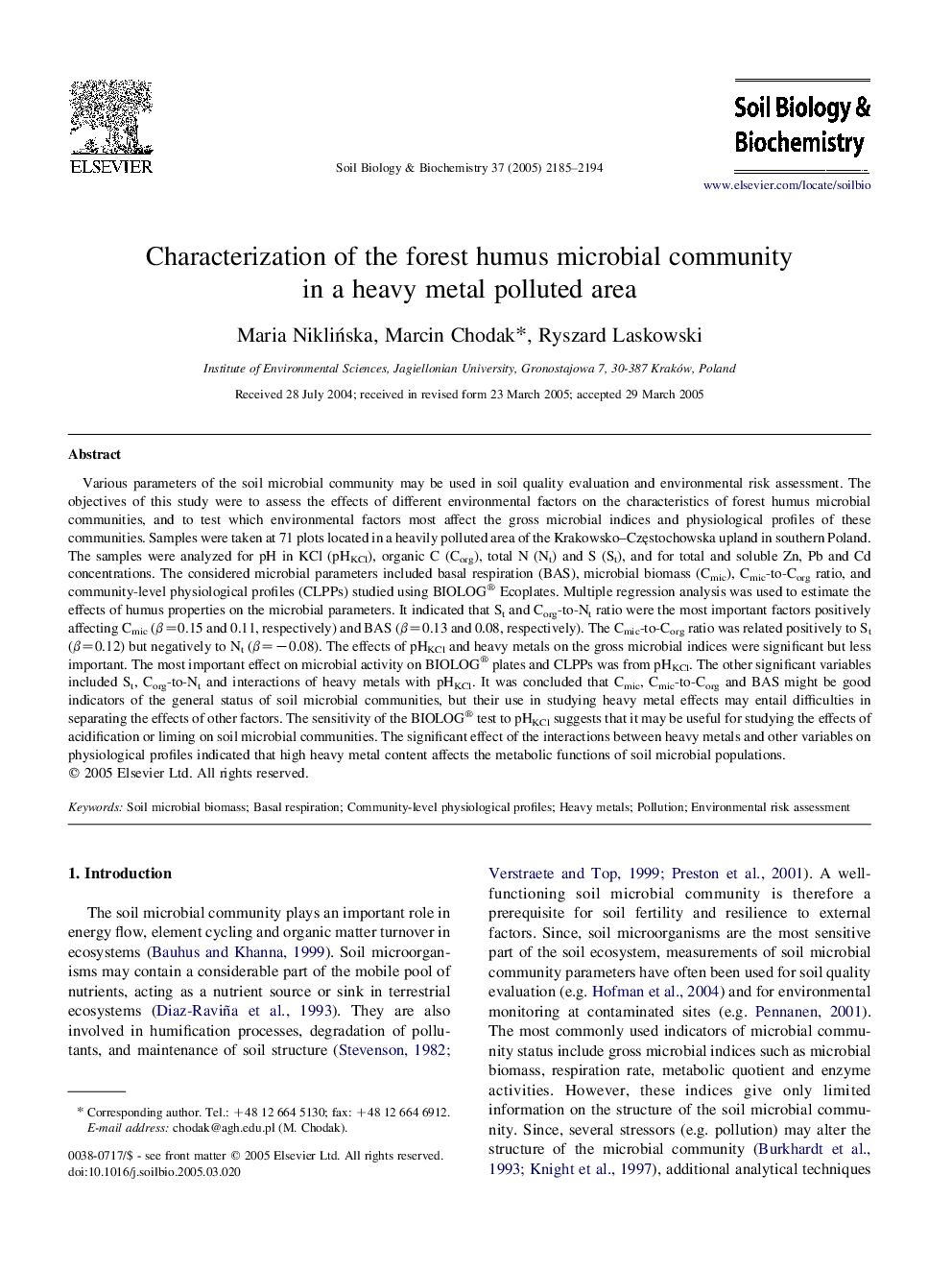| Article ID | Journal | Published Year | Pages | File Type |
|---|---|---|---|---|
| 2026501 | Soil Biology and Biochemistry | 2005 | 10 Pages |
Various parameters of the soil microbial community may be used in soil quality evaluation and environmental risk assessment. The objectives of this study were to assess the effects of different environmental factors on the characteristics of forest humus microbial communities, and to test which environmental factors most affect the gross microbial indices and physiological profiles of these communities. Samples were taken at 71 plots located in a heavily polluted area of the Krakowsko–Cze¸stochowska upland in southern Poland. The samples were analyzed for pH in KCl (pHKCl), organic C (Corg), total N (Nt) and S (St), and for total and soluble Zn, Pb and Cd concentrations. The considered microbial parameters included basal respiration (BAS), microbial biomass (Cmic), Cmic-to-Corg ratio, and community-level physiological profiles (CLPPs) studied using BIOLOG® Ecoplates. Multiple regression analysis was used to estimate the effects of humus properties on the microbial parameters. It indicated that St and Corg-to-Nt ratio were the most important factors positively affecting Cmic (β=0.15 and 0.11, respectively) and BAS (β=0.13 and 0.08, respectively). The Cmic-to-Corg ratio was related positively to St (β=0.12) but negatively to Nt (β=−0.08). The effects of pHKCl and heavy metals on the gross microbial indices were significant but less important. The most important effect on microbial activity on BIOLOG® plates and CLPPs was from pHKCl. The other significant variables included St, Corg-to-Nt and interactions of heavy metals with pHKCl. It was concluded that Cmic, Cmic-to-Corg and BAS might be good indicators of the general status of soil microbial communities, but their use in studying heavy metal effects may entail difficulties in separating the effects of other factors. The sensitivity of the BIOLOG® test to pHKCl suggests that it may be useful for studying the effects of acidification or liming on soil microbial communities. The significant effect of the interactions between heavy metals and other variables on physiological profiles indicated that high heavy metal content affects the metabolic functions of soil microbial populations.
